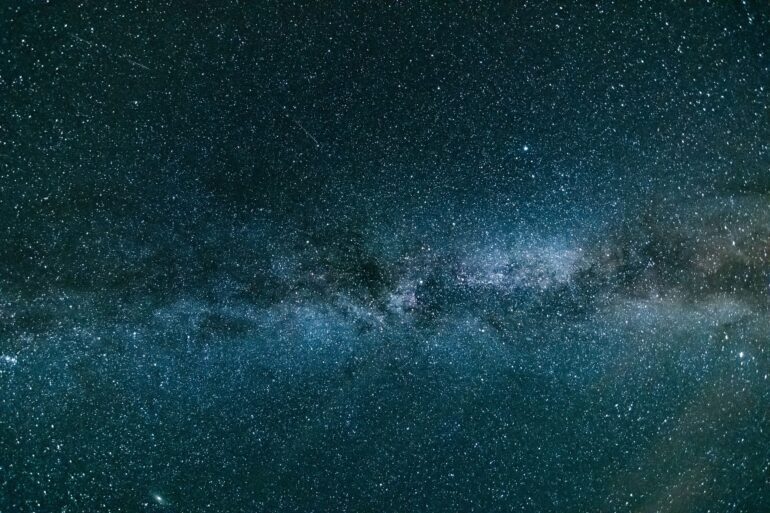TL;DR:
- ASTRONOMALY, a machine learning program, uncovered 1635 anomalies in 4 million galaxy images from DECaLS.
- It operates unsupervised, finding novel outliers like gravitational lenses and peculiar galaxies.
- ASTRONOMALY performs best with active learning, incorporating human feedback in its searches.
- In recent tests, it outperformed other algorithms, detecting intriguing anomalies.
- Challenges in data transfer call for moving computational power to observatories.
Main AI News:
The landscape of astronomy is undergoing a profound transformation. While traditional narrow-field point-and-shoot astronomy, exemplified by the James Webb Space Telescope (JWST), still holds its significance, the future of celestial discovery lies in the expansive realm of large wide-field surveys, particularly propelled by the integration of cutting-edge machine learning technologies.
Enter ASTRONOMALY, a groundbreaking machine learning program that has ushered in a paradigm shift in astronomical research. In a remarkable feat, ASTRONOMALY meticulously scrutinized a staggering four million galaxy images sourced from the Dark Energy Camera Legacy Survey (DECaLS), unveiling a treasure trove of 1635 anomalies, among them 18 hitherto unidentified sources exhibiting “highly unusual morphology.” This heralds a new era of collaboration between human astronomers and software, an alliance that promises to outperform individual capabilities in observational science.
Survey telescopes have long been indispensable tools in the astronomer’s arsenal. What sets the twenty-first century apart is the astronomical data deluge they generate, far surpassing the capacity of human exploration. For instance, the forthcoming Vera Rubin Observatory is poised to generate a staggering 20 terabytes of data every night, accumulating to a mind-boggling 60 petabytes over a decade. This abundance of data is where artificial intelligence steps in, revolutionizing the pace at which discoveries are made.
Unlike its predecessors, ASTRONOMALY operates in an ‘unsupervised’ mode, enabling it to uncover novel types of outliers that capture the fascination of astronomers worldwide. These anomalies span an eclectic range, from gravitational lenses and galactic mergers to enigmatic red-shift patterns and other cosmic oddities. Remarkably, ASTRONOMALY achieves its peak performance when it engages in active learning, leveraging human input to rectify its errors and fine-tune its searches, yielding results that are nothing short of extraordinary. And all of this transpires in a matter of mere hours, a testament to the synergy of human expertise and artificial intelligence.
In a recent preprint paper, astronomers put ASTRONOMALY to the test on an unprecedented scale, showcasing its ability to operate effectively in large-scale environments. Armed with a vast trove of DECaLS data, they rigorously assessed various algorithms, with the unsupervised approach, bolstered by human-guided active learning, emerging as the frontrunner, yielding a profusion of unique anomalies.
Noteworthy among these anomalies are “ring galaxies exhibiting strange colors and morphology, a source that is half red and half blue, a potential strongly lensed system with a pair of sources acting as the lens, several known interacting groups and some sources that are either interacting or coincidental alignments.” Of particular intrigue is an object emitting enigmatic radio emissions, tentatively attributed to the presence of a quasar, yet adorned with a mysterious ring feature that might signify a rare red-ringed galaxy or a gravitational lens. Another anomaly presents itself as a ring-shaped starburst galaxy, adorned with either a tidal tail or a companion galaxy in a collision course.
These remarkable discoveries, unearthing objects that would have otherwise eluded detection, underscore the immense potential of active learning algorithms in reshaping the future of astronomy. They foreshadow a promising era of astronomical exploration, brimming with exciting revelations and groundbreaking insights.
However, amidst this transformative age of colossal datasets, one formidable challenge persists: data transfer. As the researchers candidly admit, the transfer of data from the host server to a local computer proved to be a protracted ordeal, spanning several weeks. Their proposed remedy for this bottleneck is a shift in perspective—rather than attempting to relocate the data, it appears more pragmatic to transport the computational prowess to the host observatory, thereby streamlining the process and ensuring that the astronomical community can harness the full potential of AI-driven anomaly discovery.
Conclusion:
ASTRONOMALY’s AI-driven anomaly discovery marks a pivotal moment in astronomy, enabling the identification of previously hidden celestial phenomena. This innovation promises to reshape the market by accelerating astronomical research and uncovering new frontiers in the cosmos, making data-intensive observations more accessible and fostering collaborations between human astronomers and AI systems.

